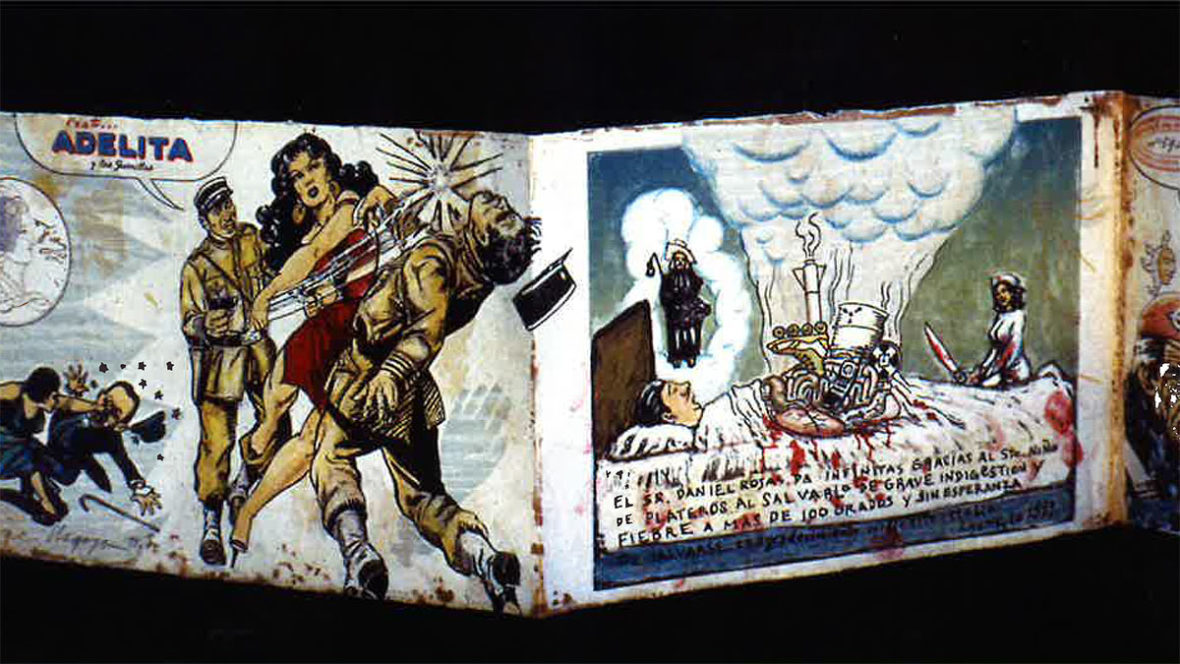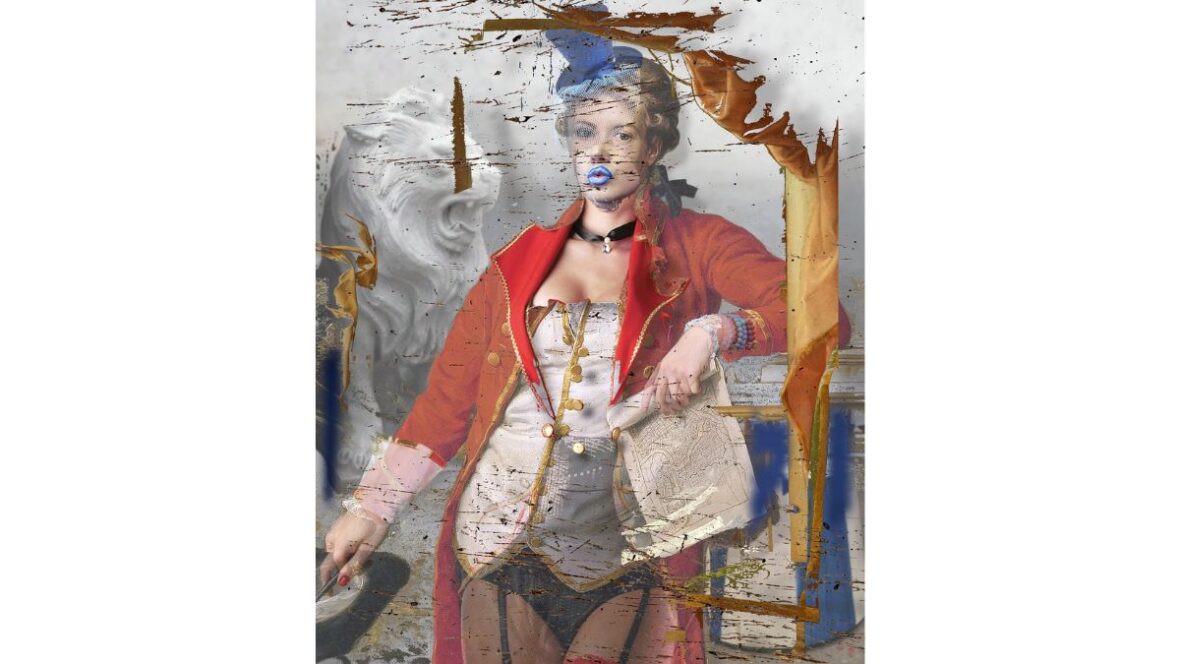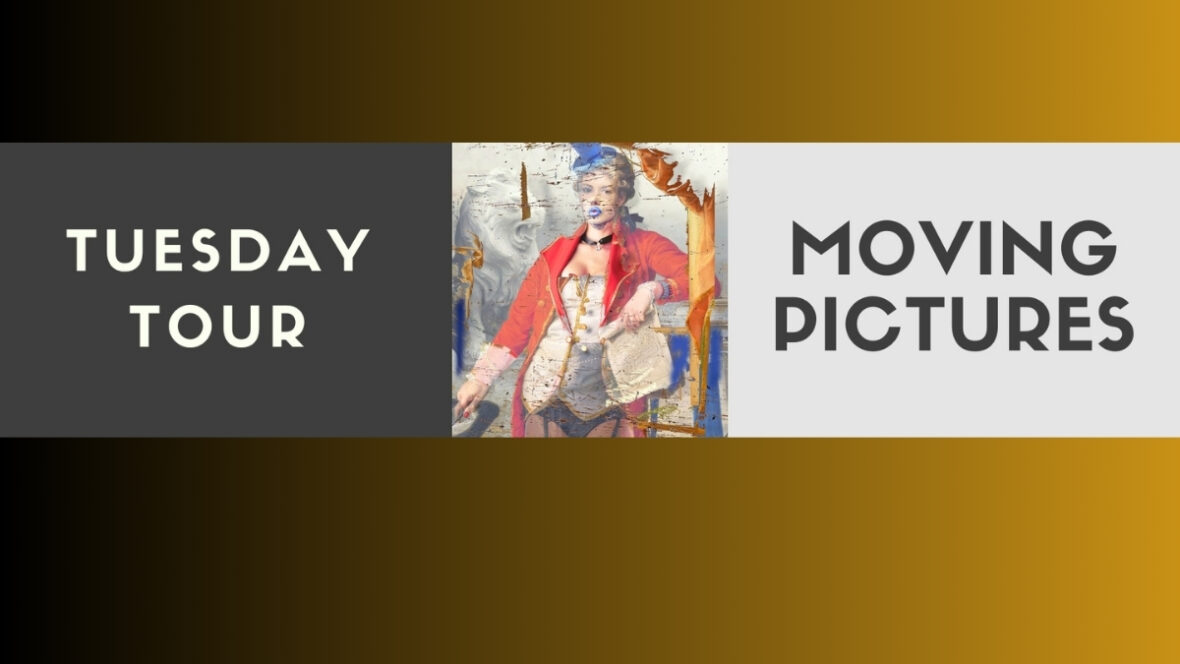Pressure Points
Exhibition Statement
Pressure Points: Recent Prints from the Collections of Jordan D. Schnitzer and the Jordan & Mina Schnitzer Foundation featured a range of contemporary prints from the collections of Jordan D. Schnitzer and The Jordan & Mina Schnitzer Foundation. Works in the exhibition were created between 1999-2003 by artists of regional, national, and international reputation, including Mark Bennett, Enrique Chagoya, Tony Fitzpatrick, Jeff Koons, Julian Opie, Kiki Smith, and Kara Walker, among others. A wide variety of traditional and non-traditional printmaking processes were represented, including aquatint, drypoint, etching, lithography, mono print, photogravure, woodcut, and screen print.
A number of themes are explored in the exhibition, including autobiography and personal memory. Louise Bourgeois’ The Guilty Girl Is Fragile, for example, explores themes of guilt, fragility, sexuality, childhood, and body. Similarly, Judy Hill’s Learning to Smoke suggests a similar loss of innocence as well as an emerging sexuality and expectations about the role of women and may foreshadow her other work in the exhibition, Watermelon Bride.
Pop culture continues to be a popular theme among contemporary printmakers, just as it was forty years earlier in the works of Roy Lichtenstein and Andy Warhol. Donald Baechler’s Cone depicts a simple ice cream cone surrounded by pictures from children’s books and puzzles. Jeff Koon’s Inflatable Balloon Flower (Yellow) re-examines our childhood relationship with balloons, while Mark Bennett’s blueprints of the homes of television characters from the 1960s strikes a nostalgic chord among viewers.
Other artists, such as Jonathan Seliger, elevated ordinary objects to the level of high art, as in his Politely (a brown paper grocery bag with the words “Thank you” printed on it) and Pint I (an elongated milk carton broken down and opened up). By contrast, Fred Tomaselli’s obsessive grids of drug capsules and Tony Fitzpatrick’s series on gambling examine various aspects of consumer culture and addiction.
The politics of history and identity came to play in the works of a number of the artists in the exhibition. Kara Walker’s Emancipation Approximation and Enrique Chagoya’s Les Adventures des Cannibales Modernistes look at history from an African American and Hispanic perspective. Like Walker, African-American artist Robert Colescott addresses issues of racial and gender stereotyping in tough, provocative, and at times, graphic works. Robert Gober’s work deals with social issues like AIDS, world health, and human rights, while Kiki Smith explores issues of body in her work.
Some of the artists in the exhibition make portraits or self-portraits. Robert Longo’s Eric and Sandy, for example, are typical of his photorealistic depictions of young urban professionals. Based on advertising and fashion, their contorted bodies seem to be full of energy and movement yet frozen in time. By contrast, Julian Opie’s Angelica and Keith, life-size cutouts mounted on foamex are suggestive of comics or coloring books, appear aloof, removed, and detached. Chuck Close’s Self-Portrait reflects the artist’s ongoing exploration of artistic processes and techniques through portraits of himself and friends.
Finally, several of the artists in the exhibition used language as a textual focus of their art. Tad Savinar’s Draft Periodic Table for the History of Dressing in Black as a Fashion Statement reflects the artist’s ongoing artistic and cultural investigations. Jenny Holzer’s In a Dream You Saw a Way to Survive and You Were Full of Joy is part of series of fifty marble benches commissioned to benefit Doctors of the World/Medecins du Monde; Holzer provided the words, and sculptors carved the message and assembled the bench.
As art historian Elizabeth Bilyeu has commented, “Pressure points. What happens when prints and works produced in multiple copies are made by avant-garde artists and assembled into one exhibition? Points of pressure surface. Like any good experience, the works dare the viewer to think, question, and react. Whether the challenges address the works’ media and processes or larger social issues, the prints exert pressure.”“Pressure points. What happens when prints and works produced in multiple copies are made by avant-garde artists and assembled into one exhibition? Points of pressure surface. Like any good experience, the works dare the viewer to think, question, and react. Whether the challenges address the works’ media and processes or larger social issues, the prints exert pressure.”
Artists
John Buck
Louise Bourgeois
Enrique Chagoya
Tony Fitzpatrick
Robert Gober
Laura Ross-Paul
Kara Walker
Donald Baechler
Robert Colescott
Tad Savinar
Chuck Close
Judy Hill
Robert Longo
Jenny Holzer
Jonathan Seliger
Julian Opie
Mark Bennet
Jeff Koons
Suzanne Caporael
Fred Tomaselli
Gary Hume
Kiki Smith
Judy Pfaff



